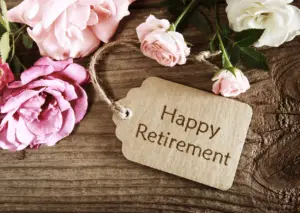The 50/30/20 budgeting rule is a simple guide to managing your money. It changed my financial life.
A huge financial reality hit me when someone said, “Only 55% of your income should go toward your essentials.” At that point in my life, my essentials consumed 105% of my income. You heard that right—I spent more than I earned to survive.
I knew I was struggling, but seeing that number made it painfully clear: I wasn’t just overwhelmed—I was drowning.
Numbers don’t lie. They aren’t subjective and don’t sugarcoat things. They tell you, in cold, hard facts, where you stand. And at that moment, my numbers were screaming: Something has to change.
That’s when I discovered the 50/30/20 budgeting rule—a simple yet powerful formula that completely transformed how I managed my money.
This blog is the third instalment in our Wealth Wellness Series. Missed the first two?
Catch up here:
- WWS 1: Discover Your True Money Personality and
- WWS 2: Ultimate Money Checklist: 12 Steps to Financial Success
What is the 50/30/20 Budgeting Rule?
Knowing our numbers is a good place to start fixing your money issues. This rule brings structure and clarity. It breaks down your income into three easy categories:
- 50% for Needs (rent, utilities, groceries, childcare, transportation)
- 30% for Wants (entertainment, dining out, hobbies, shopping)
- 20% for Savings and Debt Repayment (emergency fund, retirement, paying off loans)
The 50/30/20 rule is something to aim for. Most people will initially find their numbers are way off. That’s okay. The goal is to adjust and gradually create a balanced financial life. Wanna know what my expenses-to-income ratio is right now? How about 20%? I have gone from spending 105% of my income towards expenses to spending 20%. Knowing the 50/30/20 principle is important because it gets you moving (hopefully, in the right direction).
Why these three categories? Because they’re essential for wholeness and well-being. Fun needs no introduction—we naturally spend on that. Essentials get paid because the consequences of not paying are painful. The real challenge? Setting money aside for savings and investments. Fun is great, but we want to afford it now and in the future. That’s why prioritising long-term security matters.
But why stop at 50% for expenses? If you can lower costs and boost income, keep going—I never stopped. Fun fact: In 2021, I moved from London to Bishkek, Central Asia, where the cost of living is 80% lower. Even here, where things are much cheaper than in most parts of the world, I still hunt for bargains. Read all about it here.
Why Budgeting is Important
When you know where your money is going, you take back control instead of constantly feeling like your bank balance is out of your hands.
Some key benefits of budgeting include:
- Reducing financial stress
- Avoiding unnecessary debt
- Planning for the future (holidays, homeownership, retirement)
- Ensuring you have enough for essentials, even when unexpected expenses arise
The 50/30/20 budgeting rule helped me regain control—and it can do the same for you.
Consider this: as of August 2024, people in the UK owed £1,864.9 billion in personal debt. This staggering figure highlights the critical need to manage and reduce personal debt. On top of that, more than 11 Million Brits have less than £1,000 saved up.
Where do you fit in? Are you part of the 11 million?

How to Use the Budgeting 50/30/20 Rule (Even on Minimum Wage!)
Budgeting isn’t just helpful when your income is low—it’s essential. Every penny must be used well, and there’s no room for waste.
I know this firsthand. At one point, my essentials alone consumed more than 100% of my income. I was constantly playing financial catch-up, digging myself deeper into debt. However, once I started budgeting, I was able to match my spending to my income and stop the financial bleeding. That alone was a game-changer.
If you’re on a low wage, the 50/30/20 budgeting rule may not be immediately realistic—but it’s a goal to work toward. The key is to start where you are, track your spending, and make small, consistent adjustments.
Calculate Your Income
Start by determining your monthly take-home pay (after taxes). If you earn £1,800 per month:
- 50% for Needs: £900 for rent, bills, food, and childcare
- 30% for Wants: £540 for eating out, Netflix, shopping
- 20% for Savings & Debt: £360 for saving or paying off debt
If you have a lower income, you should focus on adjusting expenses within these categories. This might mean cutting unnecessary subscriptions or finding cheaper groceries, utilities, and clothing alternatives.
Unpopular Opinion Alert
Spending 30% on wants and non-essentials might not make sense if you’re in debt or have no savings. (Just saying.) Something’s got to give. If your finances aren’t in the best shape, cutting back on a few creature comforts now can set you up for a better future.
The good news? You control your budget. You decide what to sacrifice today to save more or pay off debt faster.
Budgeting for Essential Expenses
Life is expensive, and the UK’s current cost of living crisis isn’t making it any easier. Some expenses require careful planning, so let’s break down the biggest ones: housing, food, and transportation.
Housing and transportation are mostly fixed costs, making them harder to cut. While moving to a cheaper area or carpooling are options, they’re not always practical in the short term. On the other hand, food is more flexible, and small changes can lead to big savings.
Take grocery shopping, for example. How often have you popped into Tesco for one item and left with a full basket? Now, multiply that by five trips a week—it all adds up fast. A simple way to save? Reduce store visits. Meal planning, setting a weekly grocery budget, buying in bulk, avoiding impulse purchases, and shopping at discount stores can make a real difference.
I’ve written extensively on how to slash your grocery bill—check out my full guide here.
Budgeting for Childcare & Day-Care
Childcare used to be the financial pain of my life. When my kids were little, I often felt like I was working just to pay for the nanny, nursery, and daycare. Thankfully, there are ways to reduce these costs.
The UK government has stepped up its game, offering more support for parents. If you’re eligible, government-backed schemes can significantly cut your childcare expenses. For more details on available support, click here.
Other ways to save include shared childcare arrangements, flexible work schedules, and, where possible, seeking help from family and friends. It takes some planning, but every little saving helps.
Budgeting for Other Expenses
Set a realistic budget for entertainment and clothing. Dining out often gets a bad reputation in personal finance, but it’s about balance. If dining out brings you joy, factor it into your budget rather than feeling guilty about it. Eating out isn’t my priority because I love cooking at home and am a great cook (yes, I did mean to toot my own horn), but my kids love dining out, and it’s a social experience for them. Rather than cutting it out completely, consider limiting dining out to special occasions or opting for budget-friendly restaurant choices.
When it comes to clothing, my best strategy is investing in quality over quantity. Classic, well-made pieces last longer and stay trendy for life, reducing the need for constant replacements. However, kids grow fast, so shopping smart is key—take advantage of seasonal sales, second-hand shops, and online discount codes to stretch your budget further.
Using Tools to Make Budgeting Easier
A simple way to track your budget is to use my personal budgeting Excel sheet or budgeting apps like YNAB, Monzo, or Emma. These help automate spending tracking to stay on top of your finances.
Final Thoughts on the 50/30/20 Budgeting Rule
If your finances feel out of control, trust me—I’ve been there. But here’s the good news: it doesn’t have to stay that way. The 50/30/20 budgeting rule can give you a roadmap to stability and financial peace of mind.
Are you ready to manage your money? Start today by calculating your income and allocating it according to the 50/30/20 rule.
Ready for More Money-Saving Tips? Sign up for my newsletter below and get practical money tips delivered to your inbox!
Follow me on Instagram for even more savings hacks and financial insights. Let’s make saving money simple and fun!





